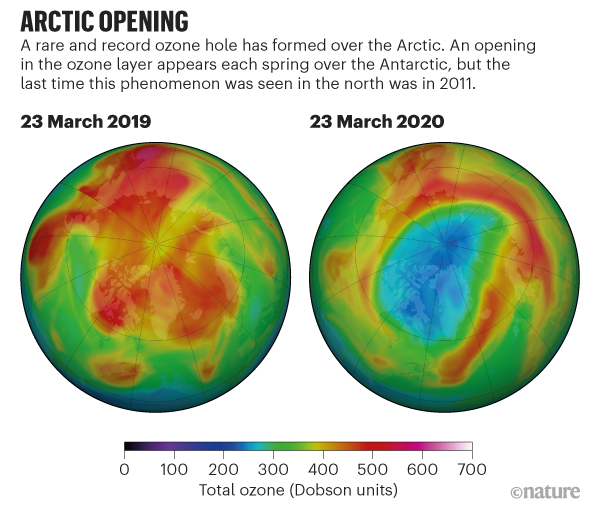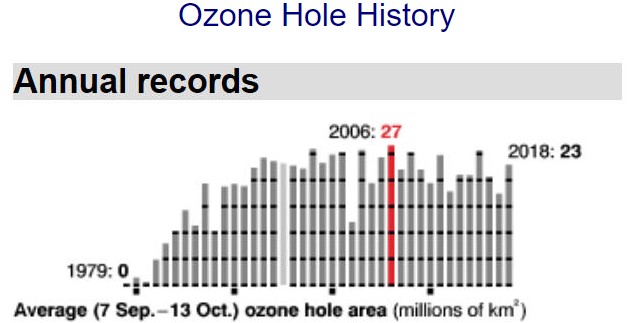We were told that refrigerant gases and CFCs and spray cans and stuff were all terribly bad because they caused a huge hole in the ozone layer above the Antarctic.
So all the non-patented gases were banned and we all had to change to newly invented and patented (more expensive) gases to save those of us in the southern hemisphere from skin cancer.
Well, guess what? Decades after the last of those nasty gases was released in the wild, the biggest hole in the ozone layer has just been measured above the Arctic.
Surely we weren’t spun a line based on insufficient evidence were we? Would someone do that to us? The fact that measurement of the size of the ozone hole over Antarctica was relatively new and there was no historical data to base anything on surely must have weighed heavily on the expensive changes society had to make to solve this particular climate crisis?

A vast ozone hole — likely the biggest on record in the north — has opened in the skies above the Arctic. It rivals the better-known Antarctic ozone hole that forms in the southern hemisphere each year.
Record-low ozone levels currently stretch across much of the central Arctic, covering an area about three times the size of Greenland (see ‘Arctic opening’). The hole doesn’t threaten people’s health, and will probably break apart in the coming weeks. But it is an extraordinary atmospheric phenomenon that will go down in the record books.
“From my point of view, this is the first time you can speak about a real ozone hole in the Arctic,” says Martin Dameris, an atmospheric scientist at the German Aerospace Center in Oberpfaffenhofen. […]
The Antarctic ozone hole forms every year because winter temperatures in the area routinely plummet, allowing the high-altitude clouds to form. These conditions are much rarer in the Arctic, which has more variable temperatures and isn’t usually primed for ozone depletion, says Jens-Uwe Grooß, an atmospheric scientist at the Juelich Research Centre in Germany.
But this year, powerful westerly winds flowed around the North Pole and trapped cold air within a ‘polar vortex’. There was more cold air above the Arctic than in any winter recorded since 1979, says Markus Rex, an atmospheric scientist at the Alfred Wegener Institute in Potsdam, Germany. In the chilly temperatures, the high-altitude clouds formed, and the ozone-destroying reactions began.
Nature
Say that again. “There was more cold air above the Arctic than in any winter recorded since 1979.” Ummmmm – Global warming, anyone?
Oh no, it really was the nasty chemicals, though:
Things would have been much worse this year if nations had not come together in 1987 to pass the Montreal Protocol, the international treaty that phases out the use of ozone-depleting chemicals, says Paul Newman, an atmospheric scientist at NASA’s Goddard Space Flight Center in Greenbelt, Maryland. The Antarctic ozone hole is now on its way to recovery — last year’s hole was the smallest on record — but it will take decades for the chemicals to completely disappear from the atmosphere.
These people cannot help themselves. “Smallest on record”? No. 16.4 million square kilometres was the smallest since 1982 according to NASA. This from a NASA page titled “2019 Ozone Hole is the Smallest on Record”
Abnormal weather patterns in the upper atmosphere over Antarctica dramatically limited ozone depletion in September and October 2019, resulting in the smallest ozone hole since 1982, NASA and NOAA scientists reported.
NASA
What do the numbers say?

If it was all due to the diminishing effects of CFCs et al, would there not be a downward trend since the Montreal Protocol came into force? I’m not seeing it myself.

Surely our revered climate scientists would not be being economical with the truth?
If you enjoyed this BFD article please consider sharing it with your friends.









